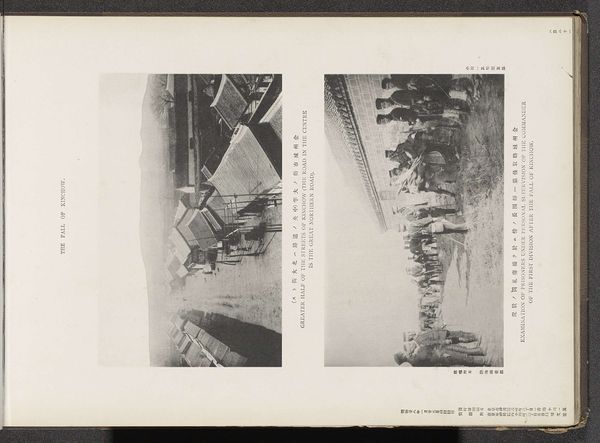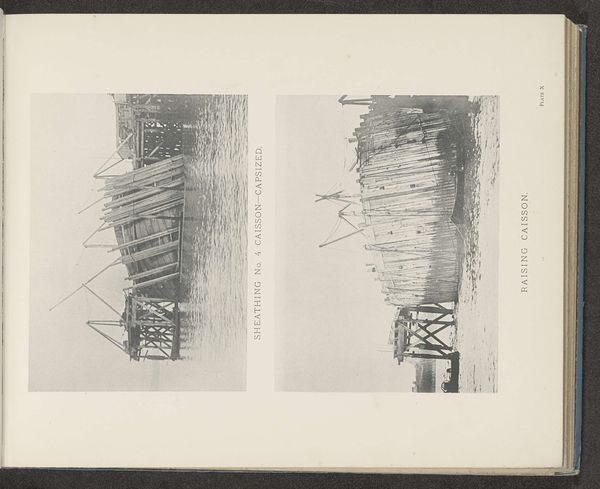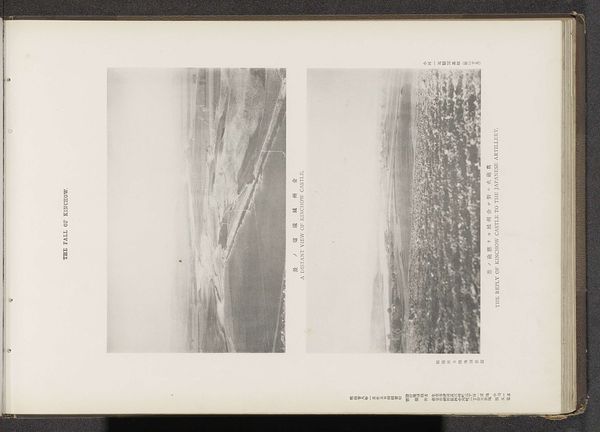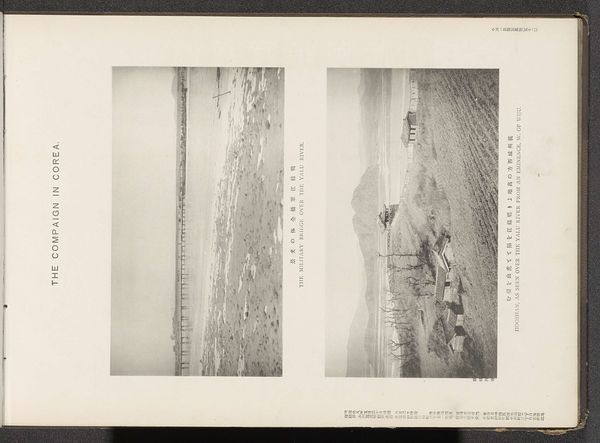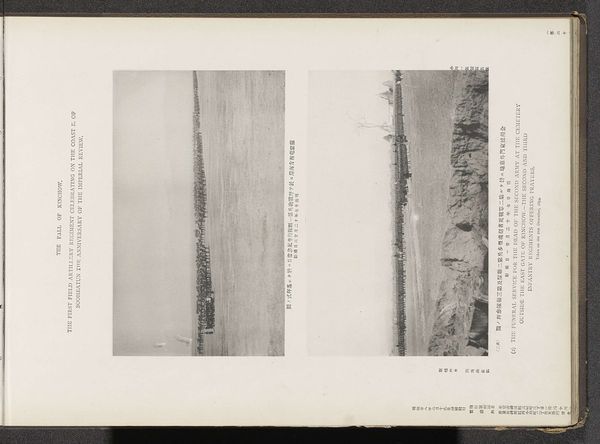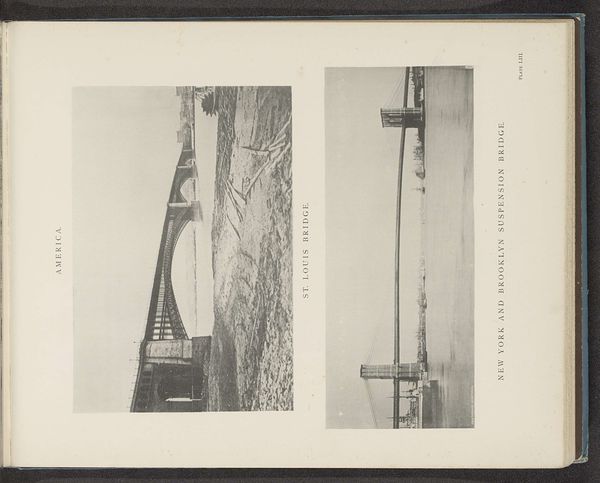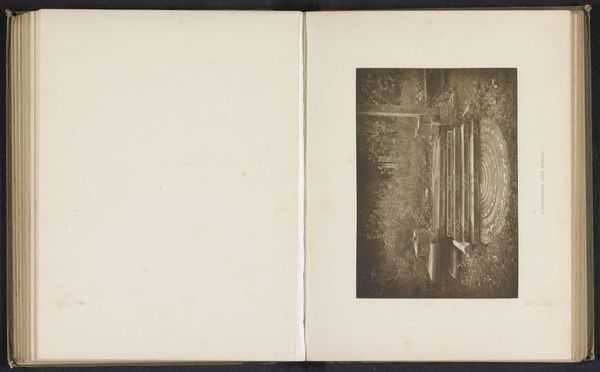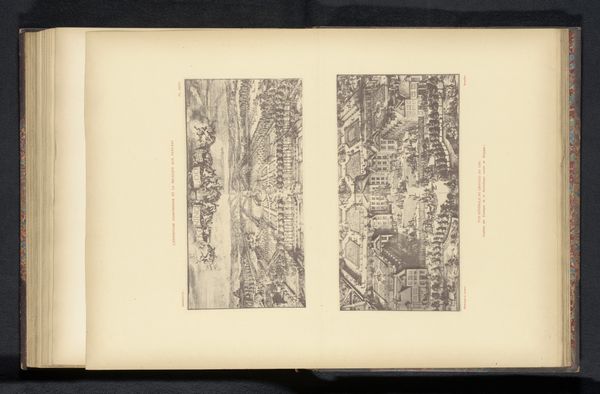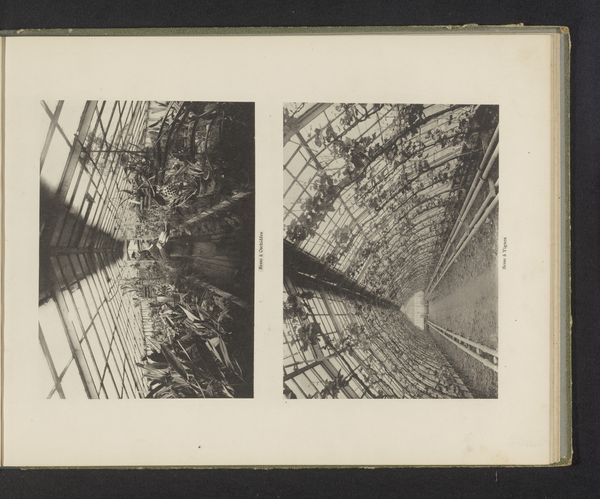
print, photography
#
aged paper
#
light pencil work
#
homemade paper
#
ink paper printed
# print
#
asian-art
#
sketch book
#
incomplete sketchy
#
hand drawn type
#
landscape
#
photography
#
personal sketchbook
#
sketchbook drawing
#
cityscape
#
sketchbook art
Dimensions: height 426 mm, width 195 mm
Copyright: Rijks Museum: Open Domain
Curator: Let’s turn our attention to a double image, a print titled “Twee gezichten op Chinchow en Petsewo,” dating to before 1895 from the Ordnance Survey Office archives. What do you make of it? Editor: Hmm, immediate impression? Melancholy. Both images have this almost ghostly quality, like faded memories clinging to the page. A kind of poignant stillness, despite presumably depicting moments of some activity around conflict or urban activity. Curator: Precisely. Formally, the diptych construction provides an immediate contrast, setting the stage for a deeper investigation. The photograph on the left displays a fortified city gate with what appears to be some human silhouettes above, juxtaposed with a stark, rather abstract depiction of, presumably, Petsewo. The flatness of the light adds to that spectral feel you pointed out, creating a sort of disembodied representation. Editor: Yes, that 'disembodied' quality. It's like architectural ghosts. What intrigues me, though, is the way the left image of Kinchow feels very constructed—lines, geometries, deliberate patterns; even in what looks like the throng of the "fall," it presents this sort of structured chaos. Then you swing your gaze over to the second and… it’s raw, almost formless in comparison. As if whatever bustling 'port view' has already been ravaged by conflict. All you’re left with are its bones. The city consumed. Curator: The formal tension is definitely suggestive. Consider, for example, how the tonal range differs markedly across the two images. The contrast appears considerably greater on the Kinchow image. Are we seeing something about the nature of photographic representation here, or something particular to the landscapes of those two locations and how the photographer understood their role in visualizing it? Editor: Perhaps it gestures toward how history remembers: the crisp memory of Kinchow, framed and formally rendered, but Petsewo… slowly erased, its history a mere whisper on weathered wood. The materiality here seems integral. This is an ink print; printed on aged paper no less. The use of ink as medium lends to this sense of historical distance as it gradually obscures with time. It invites a profound meditation on time and place. Curator: A compelling point. Perhaps even the imperfection or perceived artlessness enhances the interpretive experience—what is emphasized and elided in photographic reproductions? Editor: Indeed. Looking again, the print's very incompleteness—suggested in some ways by these incomplete sketchy lines--seems intentional. It challenges us to fill in the blanks, to contemplate the story beyond what is plainly seen, or in this case, half-seen. Curator: So, in essence, the power resides not in definitive depiction, but in suggestion— a visual echo chamber provoking viewers toward questions without concrete resolution. Editor: Leaving the viewer with lingering resonance about impermanence. Well put!
Comments
No comments
Be the first to comment and join the conversation on the ultimate creative platform.
